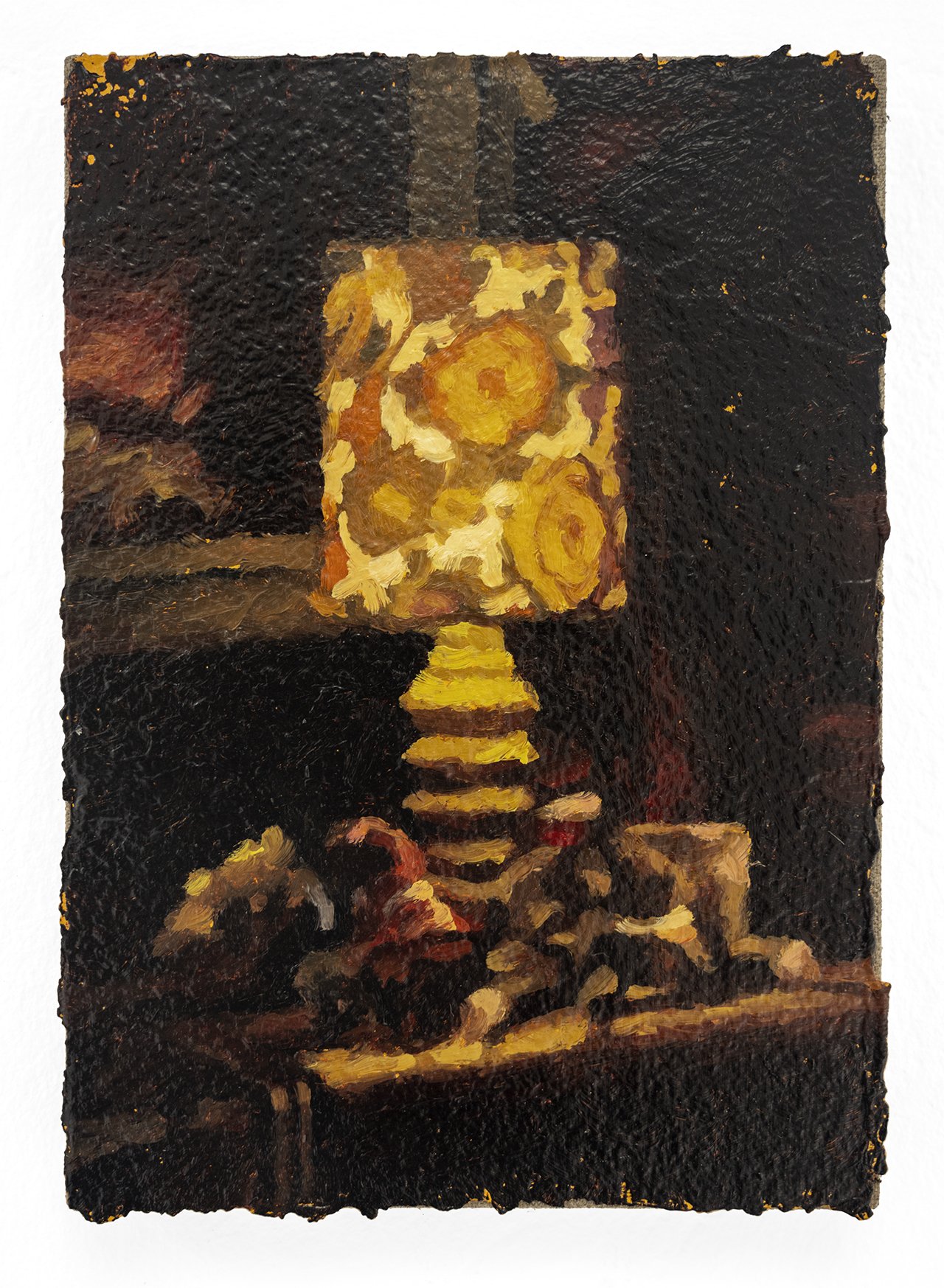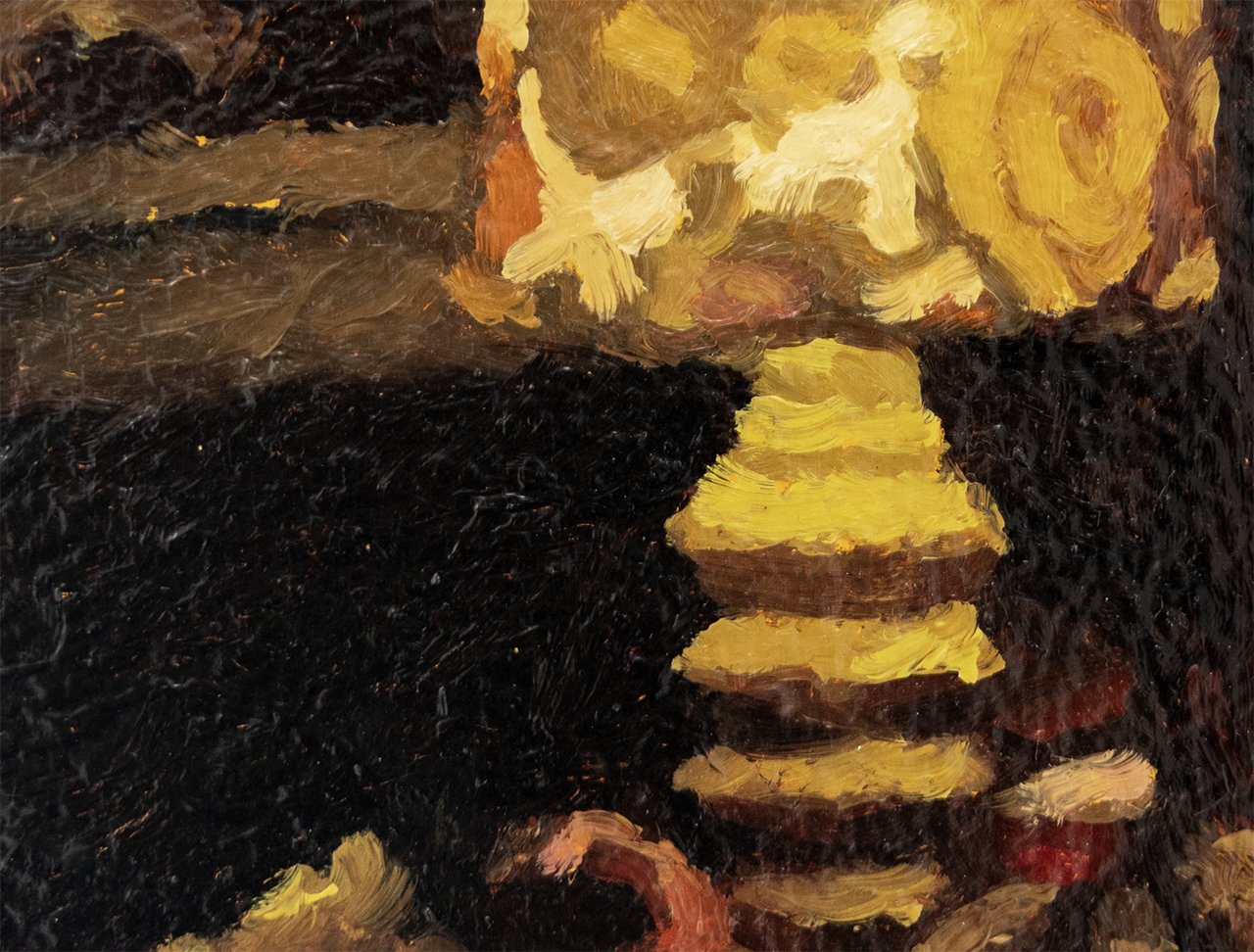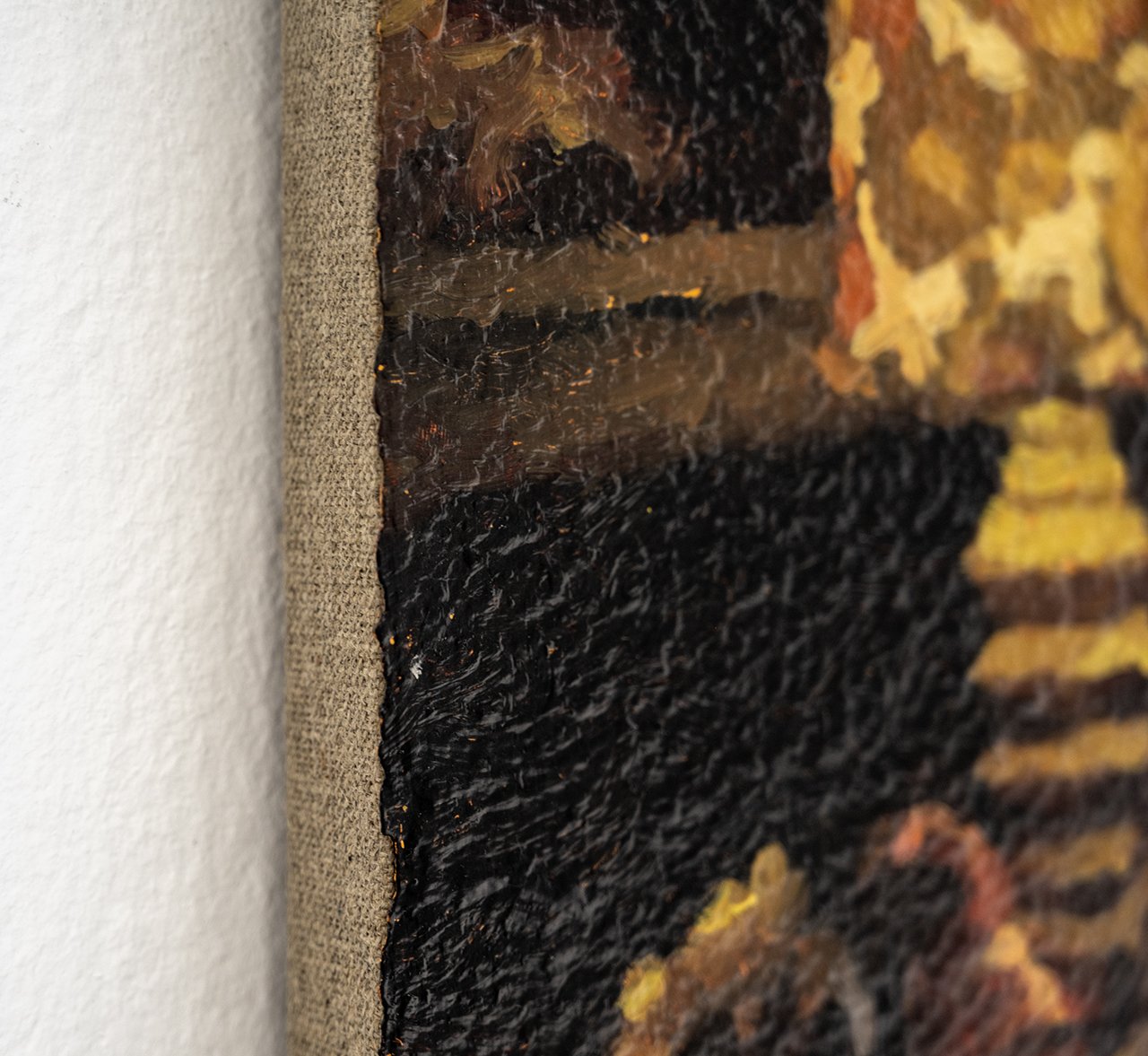Tim Wilson, Nightstand IX, 2024

Tim Wilson, Nightstand IX, 2024, Oil on paper, 8.5 x 12 x 3 in. Courtesy the artist and Painting Diary.
Warmth. Light. Peace. Such words in quick succession read like an affirmation, a manifestation, a prayer. I welcome warmth into my life. I am a light in the world. I channel peace to myself and the world around me. They are immaterial aspects of life we invariably strive toward; they are something of a foundation upon which we might build the secondary fundamentals of a good life. Of course, a “good life” is incredibly subjective, situational, and personal. Something that may feel reckless to one individual may be integral to another’s enjoyment.
As Writer in Residence at Painting Diary, I am viewing Tim Wilson’s painting in the very studio in which it was created. Amidst a vast wall of blank whiteness, its scale and the impact of the paint in its final form do not strictly correspond to one another. By this, I refer to the fact that the painting is small in scale, perhaps faithful to the scale of a lamp in the home, but the combination of realism and textured Impressionist-style paintwork creates something close to a pathetic fallacy. I am drawn to the light radiating from this domestic fixture; do I really feel warm looking at this artwork?
While many would deem the painting a still life, the mind wanders toward the potential activity around the focal point of the work. Each corner of the painting is lovingly textured, with paint betraying the fixed sides of the canvas, clawing to extend the scene beyond what we can see in this fixed state. The painting may be depicting the radiant light of a domestic lamp, but one cannot help but conjure up the fuller mental image of the home, the hearth, and the wider environment in which we function. In precarious times, we are reminded of the luxury versus necessity classifications of the objects and experiences around us. We are living under state-induced economic neglect, whereby even a home is not a given, but as Freud biographer, author, and clinical psychologist Frank Tallis says, “Vienna is timeless,” and there is nothing to tell us that Wilson is stringently grounding us in the present moment.

Tim Wilson, Nightstand IX (detail), 2024, Oil on paper, 8.5 x 12 x 3 in. Courtesy the artist and Painting Diary.
Despite the lack of clarity and prescribed narrative, there is something deeply comforting about Wilson’s painting; it is not only its small scale that encourages the viewer to come closer, but the promise of a cosy, safe space. That is the implication in micro perception, but that which occurs in the wider periphery exists solely in the minds of the viewer and beyond the canvas. What a gift it is, to have this recognizable feature presented to us, before allowing us to retreat into our own domestic imaginary, whether nostalgic, hopeful, or fantastical.
The painting maintains a fuzzy quality, as if it were a memory we have unlocked from our own minds. Anything could be happening in the background, but we are drawn to the small details. It is akin to a mindfulness exercise, we are focusing on the senses, as if we might be able to touch, taste, and smell the source material, and hear any action taking place. The tantalizing proximity to a window adds another layer of intrigue, teasing further possibilities, as well as a sprinkle of voyeurism. The setting of the painting is freely observed by the outside world, so watch what you’re doing, you’re being surveilled!

Tim Wilson, Nightstand IX (detail), 2024, Oil on paper, 8.5 x 12 x 3 in. Courtesy the artist and Painting Diary
In the haze of the panopticon effect, a distinct lack of human activity remains palpable in the piece. While the lamp will have been actively switched on for someone’s use, their fingerprints then vanish. We might dream of a world without human destruction and consumerism, and yet the light itself requires electricity and generates heat and light; the very act of switching it on has repercussions for the immediate and wider environments.
The top-left corner is highlighted with a smattering of yellow paint; whether contrived or not, the indication that the light is seeping through is tangible. The work then lives, breathing and flickering in the darkness. In the same way that we occasionally experience moments of tender humanity through the screen of the mobile phone, Wilson’s flicker of light reminds us we can create a home for ourselves, and within ourselves, regardless of our immediate environment or circumstance. The soul transcends our material conditions, but the light on the canvas illuminates its presence wherever we are.